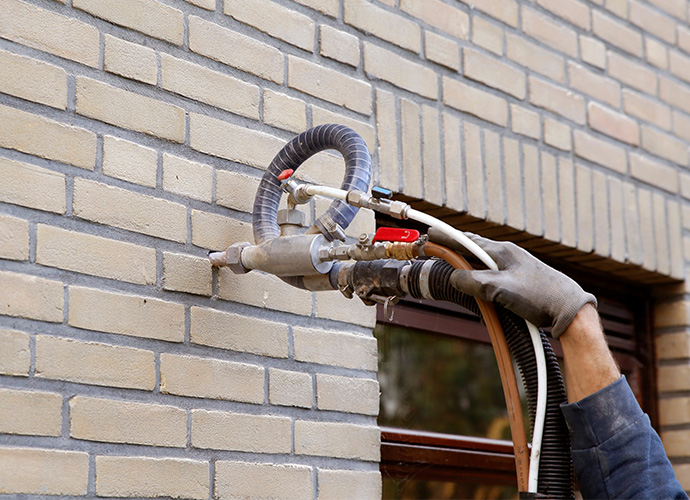Introduction to Cavity Wall Insulation
The UK is renowned for its rich architectural history, with various types of buildings, each having its unique charm and construction technique. One such feature prevalent in our homes since the 1920s is the cavity wall. However, these structures can sometimes lead to significant energy inefficiencies if not adequately insulated. In this article, we will delve into cavity wall insulation, exploring its benefits and available government schemes to aid with the costs.

The Principle and Process
Cavity wall insulation is a method employed to reduce heat loss in cavity walls. A cavity wall consists of two ‘skins’ separated by a hollow space (the cavity). British homes built after the 1920s typically have this type of wall. The outer layer is usually constructed from brick, with the inner layer made from brick or concrete block.
How Does it Work?
How does it work? Well, the principle is simple yet effective. The cavity in these walls allows cold air to circulate, leading to a significant amount of heat loss from the house. Cavity wall insulation works by filling this gap with insulating materials, hence limiting the movement of air within the cavity. This process reduces heat transfer, keeping your home warmer in the winter and cooler in the summer.
Energy Saving Figures and Cost
The Energy Saving Trust estimates that insulating your cavity walls could save up to £245 a year for a detached house, £160 for a semi-detached, £105 for a mid-terrace house, and £70 for a flat. Therefore, it’s not just about making your home more comfortable; it’s about reducing your energy bills and carbon footprint too.
The average cost of cavity wall insulation can vary depending on the size and type of your property. However, it typically ranges between £330 and £720. Given the potential energy savings, it’s a cost that could be recouped within a few years.
Government Schemes to Aid the Cost
But, what if you could offset these costs? The good news is, there are government schemes available to help with the cost of cavity wall insulation. The Energy Company Obligation (ECO4) scheme, for instance, compels large energy suppliers to assist low-income and vulnerable households in improving their home’s energy efficiency. You could qualify if you receive certain benefits or live in social housing with an energy efficiency rating of E, F, or G.
In addition, the Connected for Warmth scheme allows homeowners and landlords to apply for funding to cover the cost of energy efficiency improvements, including cavity wall insulation. However, this schemes are subject to eligibility criteria and availability of funds, so it’s advisable to check the latest on the scheme’s website.
Further Considerations
If you’re contemplating whether cavity wall insulation is the right choice for your property, here are a few additional considerations. First, while it’s generally a beneficial choice for most homes, properties exposed to driving rain or those with damaged brickwork may not be suitable for this type of insulation due to potential dampness issues. An accredited installer will be able to assess this for you.
Second, remember that once the cavity is filled, it’s a permanent change. While it’s possible to remove the insulation, it’s a complex and costly process. Therefore, making an informed decision from the outset is crucial.
Lastly, it’s important to recognise that insulation is just one aspect of a home’s energy efficiency. Other improvements, such as loft insulation, double glazing, and an efficient heating system, can also play a significant role in reducing your energy bills and carbon footprint.
As the saying goes, ‘The greenest energy is the energy you don’t use.’ Improving your home’s energy efficiency not only makes it more comfortable and potentially increases its market value but also contributes to a more sustainable future. With potential savings and government schemes available, cavity wall insulation is an option well worth exploring for homeowners and landlords alike.
This article aims to provide general advice. Please consult with a professional to understand the best energy efficiency improvements for your specific property.






